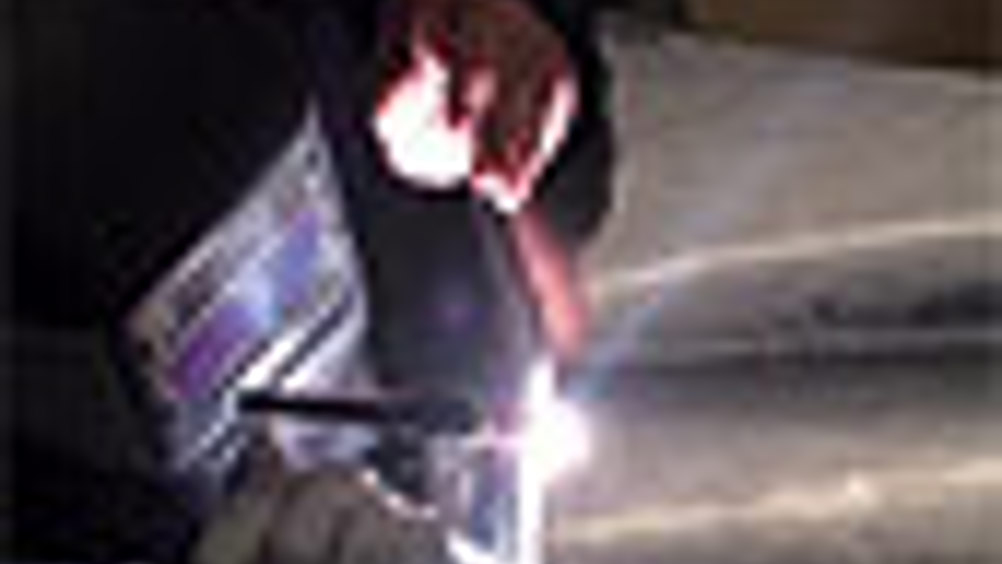Metal work
The Atom welding machine, which uses friction stir welding, could be used to create aeronautical parts such as wing panels and fuel tanks

Metal components for aeroplanes could be produced more quickly and with 70 per cent less waste using a new welding machine, it is claimed.
The device, known as Atom, was designed by engineers at the Basque technological centre Fatronik-Tecnalia and manufactured by Basque machine tool specialists Ibarmia.
The machine welds metal plates with the use of friction stir welding, a process that joins metals together by the combined action of frictional heating and mechanical deformation due to a rotating tool.
The process was invented by The Welding Institute (now TWI) in Cambridge in 1991 and since then many companies have used the technology in production — particularly for joining aluminium alloys. However, its use for joining in aircraft applications is still in the research stage.
Erika Ibáñez, a spokeswoman for Fatronik-Tecnalia, said her group believes its new five-axis friction stir welding machine is ready for use in aeronautical production. The machine, she said, can weld together parts with an accuracy of +/- 0.1mm in the Z direction. This tolerance would make the parts appropriate for use in aircraft.
Ibáñez said the machine’s accuracy is mainly due to its high stiffness in the Z direction. It can create welds, she said, that have ‘excellent mechanical properties’ and ‘high resistance to corrosion’. It is also possible to weld materials that are traditionally difficult to join such as high-strength aluminium alloys 2XXX and 7XXX.
Many aircraft components are made by mechanically fastening subcomponents together or by machining them with numerical control from a solid material.
One major problem with mechanical fastening is it suffers from corrosion and numerical-controlled machining is considered to be a wasteful process in terms of time, energy and raw material. Ibáñez said this is because a typical aluminium aeronautical part is composed of many cavities and the walls between these cavities are often very thin. A numerically controlled machining process will take a long time to machine a complex shape from a single aluminium plate.
‘The process is time-consuming and it generates a lot of chips,’ which are the wasted metal bits machined off the original part, she said. ‘More or less chips represent 95 per cent of the weight of the whole part.’
The Fatronik-Tecnalia manufacturing process would use simpler, individual parts created by machining, stamping and incremental sheet forming. The process involves shaping a metal blank by a CNC-driven small-size punch.
These individual parts would then be joined together in Fatronik-Tecnalia’s friction stir welding machine. Fatronik-Tecnalia claims this entire manufacturing process will produce 70 per cent less metal waste compared to machining a part from a solid material.
Ibáñez said the Fatronik-Tecnalia friction stir welding machine could be used to create aeronautical parts such as wing panels, fuselages and fuel tanks. The centre would also be interested in promoting its machine to the automotive and railway sectors. Two Spanish companies — bus and coach manufacturer Irizar and rail stock specialist CAF — have already expressed interest in the Fatronik-Tecnalia machine.
The centre developed its machine as part of the EU-funded NEXT (Next Generation Production Systems) project. Other collaborators on the project, such as Ona Electroerosión, a Basque manufacturer of electrical discharge machines, have developed new formulations for the liquids and filters of production machines to render them self-cleaning and less contaminating.
Another project collaborator, Spanish machine tool manufacturer Danobat, recently unveiled an ‘ecological’ grinding machine that reduces the use of refrigerant liquid by 80 per cent and energy consumption by 50 per cent.
Register now to continue reading
Thanks for visiting The Engineer. You’ve now reached your monthly limit of premium content. Register for free to unlock unlimited access to all of our premium content, as well as the latest technology news, industry opinion and special reports.
Benefits of registering
-
In-depth insights and coverage of key emerging trends
-
Unrestricted access to special reports throughout the year
-
Daily technology news delivered straight to your inbox










Water Sector Talent Exodus Could Cripple The Sector
Well let´s do a little experiment. My last (10.4.25) half-yearly water/waste water bill from Severn Trent was £98.29. How much does not-for-profit Dŵr...